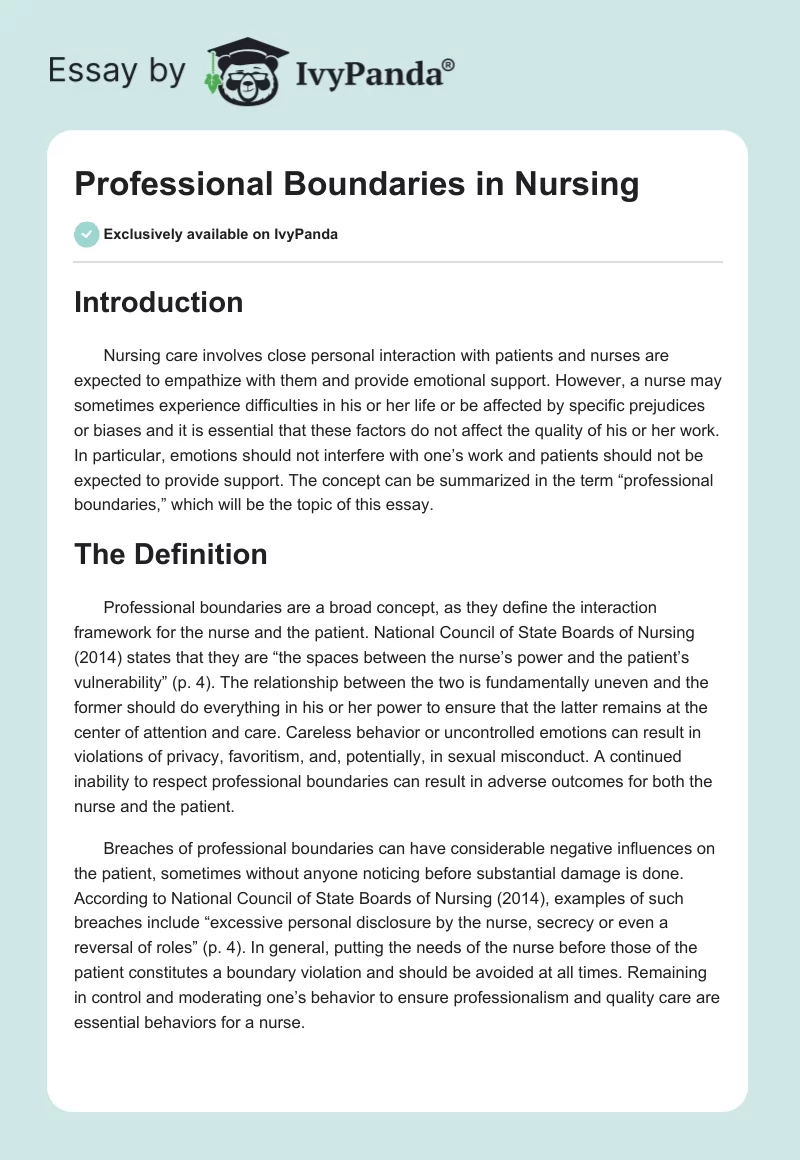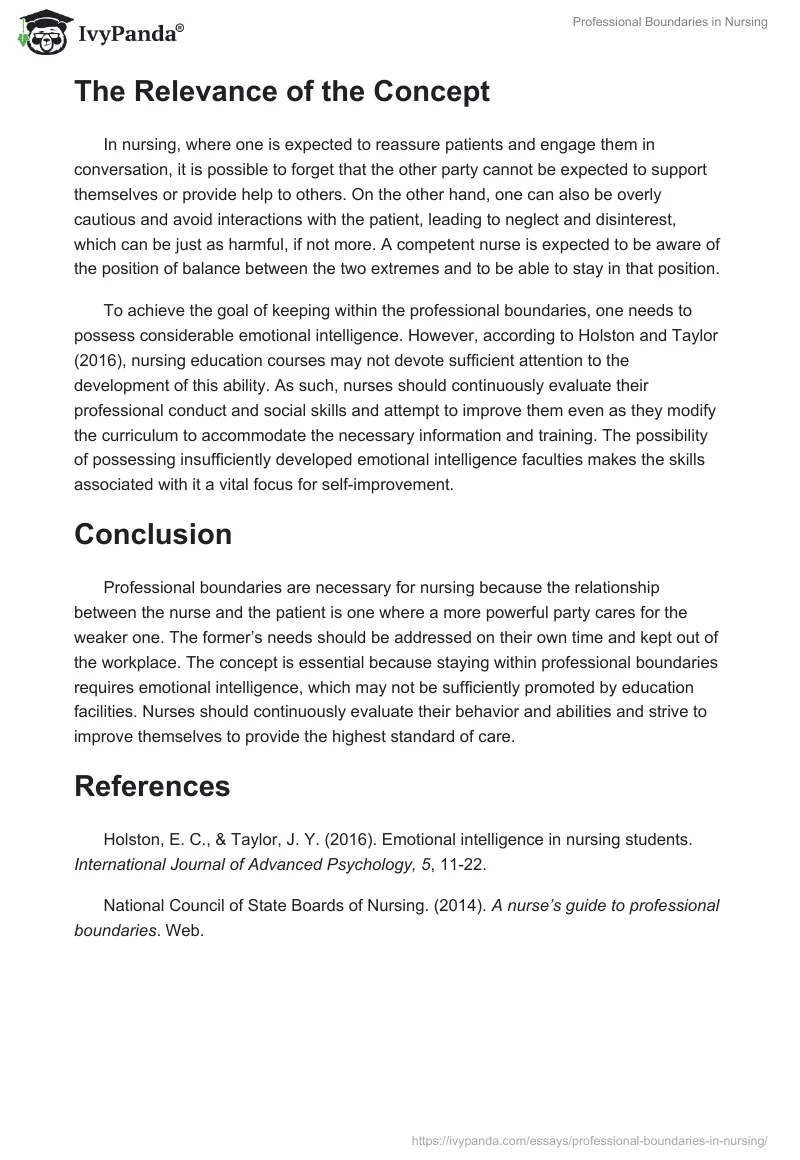Introduction
Nursing care involves close personal interaction with patients and nurses are expected to empathize with them and provide emotional support. However, a nurse may sometimes experience difficulties in his or her life or be affected by specific prejudices or biases and it is essential that these factors do not affect the quality of his or her work. In particular, emotions should not interfere with one’s work and patients should not be expected to provide support. The concept can be summarized in the term “professional boundaries,” which will be the topic of this essay.
The Definition
Professional boundaries are a broad concept, as they define the interaction framework for the nurse and the patient. National Council of State Boards of Nursing (2014) states that they are “the spaces between the nurse’s power and the patient’s vulnerability” (p. 4). The relationship between the two is fundamentally uneven and the former should do everything in his or her power to ensure that the latter remains at the center of attention and care. Careless behavior or uncontrolled emotions can result in violations of privacy, favoritism, and, potentially, in sexual misconduct. A continued inability to respect professional boundaries can result in adverse outcomes for both the nurse and the patient.
Breaches of professional boundaries can have considerable negative influences on the patient, sometimes without anyone noticing before substantial damage is done. According to National Council of State Boards of Nursing (2014), examples of such breaches include “excessive personal disclosure by the nurse, secrecy or even a reversal of roles” (p. 4). In general, putting the needs of the nurse before those of the patient constitutes a boundary violation and should be avoided at all times. Remaining in control and moderating one’s behavior to ensure professionalism and quality care are essential behaviors for a nurse.
The Relevance of the Concept
In nursing, where one is expected to reassure patients and engage them in conversation, it is possible to forget that the other party cannot be expected to support themselves or provide help to others. On the other hand, one can also be overly cautious and avoid interactions with the patient, leading to neglect and disinterest, which can be just as harmful, if not more. A competent nurse is expected to be aware of the position of balance between the two extremes and to be able to stay in that position.
To achieve the goal of keeping within the professional boundaries, one needs to possess considerable emotional intelligence. However, according to Holston and Taylor (2016), nursing education courses may not devote sufficient attention to the development of this ability. As such, nurses should continuously evaluate their professional conduct and social skills and attempt to improve them even as they modify the curriculum to accommodate the necessary information and training. The possibility of possessing insufficiently developed emotional intelligence faculties makes the skills associated with it a vital focus for self-improvement.
Conclusion
Professional boundaries are necessary for nursing because the relationship between the nurse and the patient is one where a more powerful party cares for the weaker one. The former’s needs should be addressed on their own time and kept out of the workplace. The concept is essential because staying within professional boundaries requires emotional intelligence, which may not be sufficiently promoted by education facilities. Nurses should continuously evaluate their behavior and abilities and strive to improve themselves to provide the highest standard of care.
References
Holston, E. C., & Taylor, J. Y. (2016). Emotional intelligence in nursing students. International Journal of Advanced Psychology, 5, 11-22.
National Council of State Boards of Nursing. (2014). A nurse’s guide to professional boundaries. Web.


